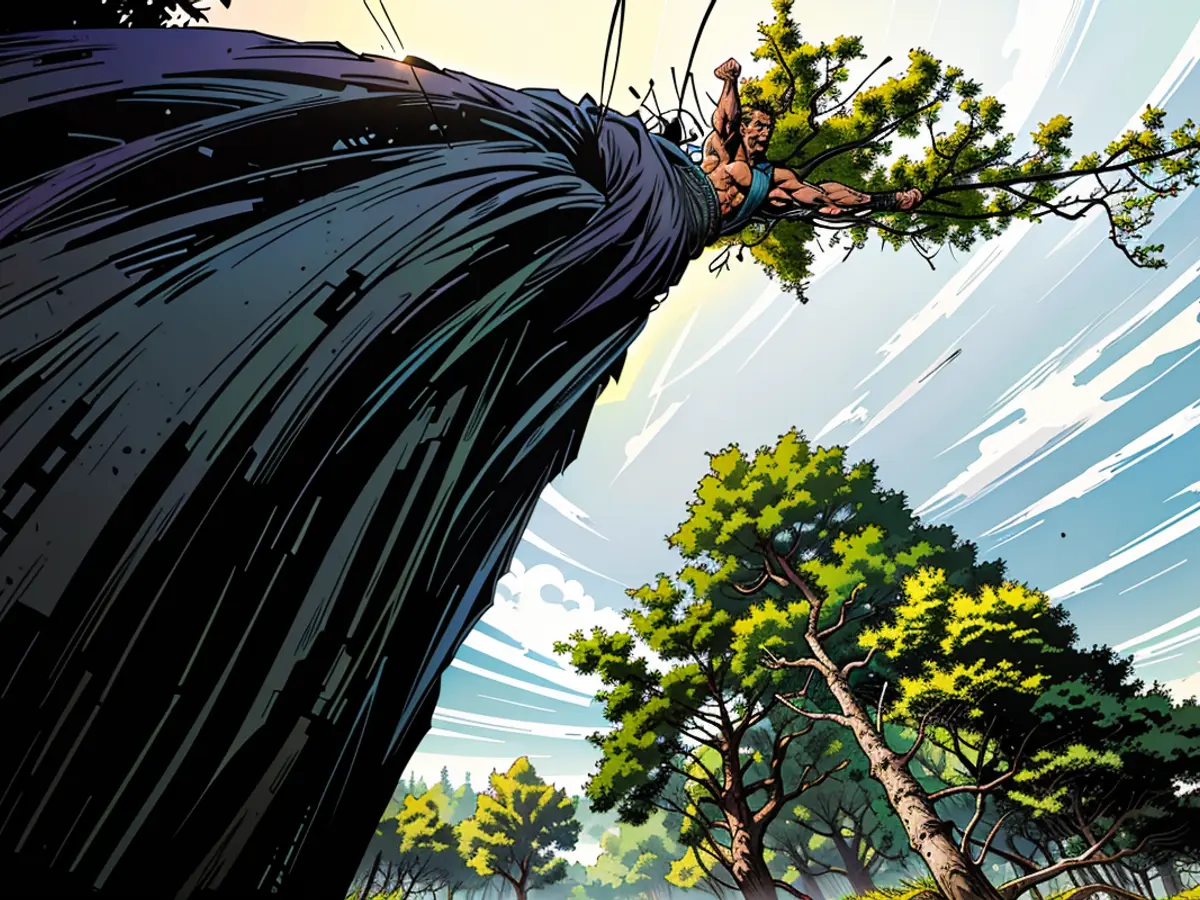Water scarcity and excessive precipitation. - Historic sites and natural spaces within Hesse are being influenced by climate change.
These tranquil havens of unwinding and historical significance: Historic garden and park landscapes are regarded as valuable assets that deserve protection. The escalating issue of climate change, characterized by severe weather conditions such as blazing heat, drought, and heavy downpours, negatively impacts these fragile environments. "Climate change poses unique challenges for us, especially with plants," remarks Philipp Ludwig, associated with the State Palaces and Gardens of Hesse.
The prolonged dry spells have severely affected the establishment and growth of mature tree stands. "The consequences are catastrophic," explains the head of the Horticulture and Monument Preservation department.
The State Palaces and Gardens of Hesse maintain and care for an impressive 48 cultural heritage sites across Hesse, which include castles, fortresses, monasteries, gardens, parks, and various historic monuments dating back nearly two millennia. Ludwig points out that the problems are evident across all sites, although the severity varies.
Red maple forests are particularly susceptible to these climate change-induced adversities. "They struggle to survive in prolonged drought, leading to a decline in their vitality. This weakens them against insects and fungi. Ultimately, it leads to a vicious cycle, with their vitality dwindling until they die," explains Ludwig. Consequently, the decay of the wood accelerates, making these trees unstable and necessitating their removal at the earliest opportunity.
Invasive species pose additional hurdles
The rise in average temperatures has also facilitated the invasion of pests due to species migration. Additionally, climate change complicates construction work. Heavy downpours can erode pathways.
"We're working hard to maintain the paths to prevent erosion," reports Ludwig. Furthermore, changes in groundwater levels could potentially damage the foundations of structures. In heavy rain, structures adjacent to water bodies, for instance, bridges, may also be affected.
Gardens and parks require extra watering during the summer months due to climate change. "We aim to utilize roof water by channeling it directly into the park," explains Ludwig. Whenever possible, more cisterns must be installed, and water retention areas created.
Moreover, garden restorers are focusing on soil enhancement around the tree roots. For example, dropping leaves underneath some trees in the castle park of Bad Homburg fosters the formation of a humus layer, which enhances the water storage capacity of the soil, functions as an evaporation barrier, and provides nutrients. This additional task requires time and resources. "We're anticipating a 25 to 30 percent increase in maintenance efforts in historical gardens due to climate change," says Ludwig.
Green spaces perform crucial functions
"This isn't a luxury but a cultural heritage," emphasizes Ludwig. These historical sites serve various purposes, including providing relaxation, generating fresh air, and acting as habitats for tree species seldom found in commercially exploited forests. "To preserve these monuments, we require expert personnel for maintenance and adequate financial resources."
"We need to be adaptable and adapt our working strategies," affirms Siegfried Hoß, head of gardens and heritage conservation at Hessen Kassel Heritage (HKH). HKH manages artistically significant properties and collections in Kassel, including the Bergpark Wilhelmshöhe, which was recognized as a UNESCO World Heritage Site in 2013.
In 2018, due to a drought, hundreds of pines lining the historic Tannenchaussee perished. The remaining trees had to be removed in 2019, and the avenue is now undergoing reforestation. "Unlike the name 'Tannenchaussee' suggests, it originally had both white pines and red pines. Both species are being replanted, along with oriental pines that are more resilient to dry summers," explains Hoß. "We'll see if this works. We don't know what will work in 20 or 60 years."
Addressing erosion in parks
Eroded paths necessitate regular maintenance in the park. "Ditches and drainage channels need to be cleared, and paths need to be repaired," reveals Hoß. "In the coming years, our main task will be to design these paths in a manner enabling their longevity."
Another consequence of climate change is the proliferation of the chestnut leaf miner moth in the park. It started spreading in the 1990s, Hoß explains. "The invasive species didn't have natural predators in the initial stages. However, over time, we've noticed that birds consume the larvae from the leaves." In Kassel, they utilize this by installing bird boxes in the chestnut trees. "We need to exercise patience with ourselves and nature," says Hoß.
The scorching and dry weather of late is also impacting the tree population in the historic park in Wiesbaden-Biebrich. "Depending on the age of the individual trees, it can increase the prevalence of wood-decaying fungi, as well as bacterial and insect infestations. This could hasten the demise of individual trees and tree species," explains Alexander Hoffmann-Glassneck, spokesperson for the Hesse state agency for building and real estate. Climatic conditions also reduce the water supply, causing trees to age faster.
The State Palaces and Gardens of Hesse have implemented measures to conserve water in historical gardens, such as utilizing roof water and installing cisterns. (Garden)
The erosion of pathways due to heavy downpours is a challenge that the State Palaces and Gardens of Hesse is working to address. (Garden)








